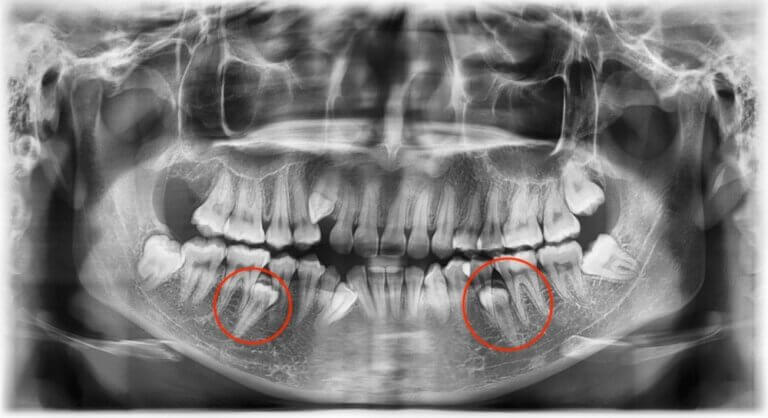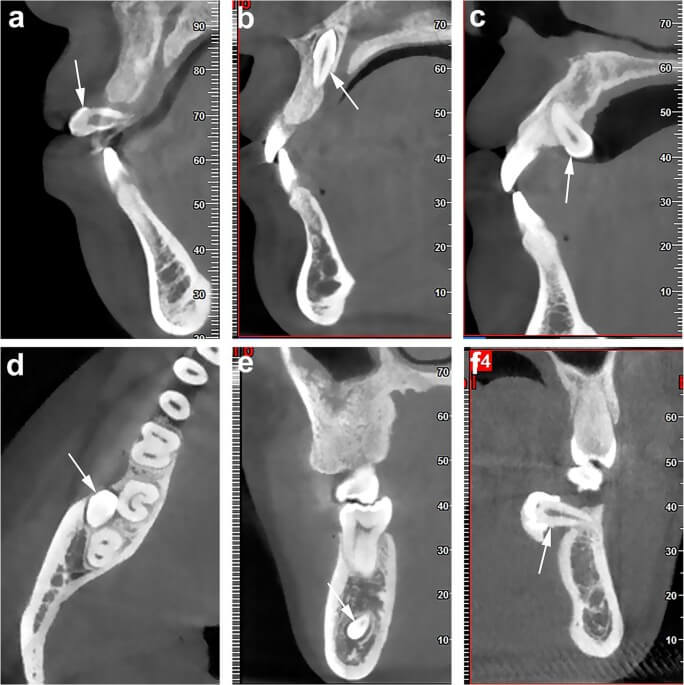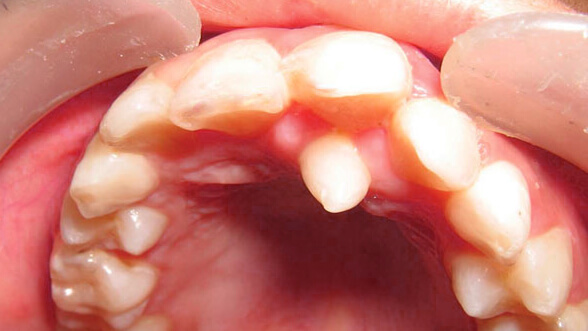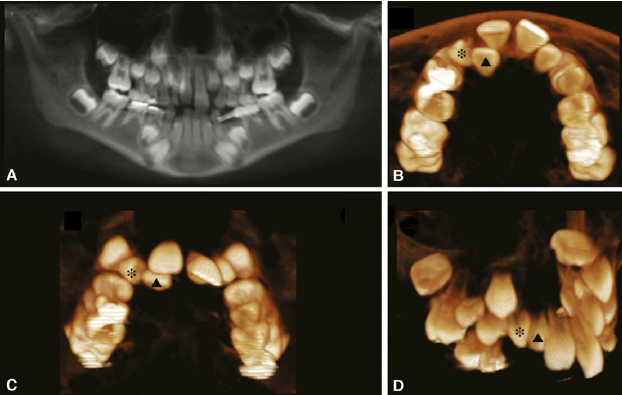CBCT Scan For Supernumerary Teeth

Supernumerary teeth, a condition also known as hyperdontia, is when a person develops additional teeth that exceed the normal expected set of teeth. While this condition is relatively rare, its implications can be significant, impacting both oral health and aesthetics. Cone beam computed tomography (CBCT) has emerged as a valuable tool in the diagnosis and treatment planning of supernumerary teeth, offering dentists and oral surgeons detailed three-dimensional images that facilitate precise identification, localization, and assessment of these anomalies. Before you deciding on whether a CBCT Scan for Supernumerary Teeth is right for you, there are some things you should know:
Table of Contents
If you have any further questions about CBCT Scans at Oral Radiology Toronto, please contact us.
What Are CBCT Scans?
Cone Beam Computed Tomography (CBCT) is a revolutionary x-ray imaging technology, providing three-dimensional views of the patient’s dental anatomy, including teeth, bones, nerves, and surrounding tissues. Unlike traditional two-dimensional X-rays, CBCT captures high-resolution, cross-sectional images by utilizing a cone-shaped beam of ionizing radiation.
The result is a detailed and accurate representation that enables dental professionals to assess anatomical structures with precision, offering a more comprehensive understanding of the patient’s oral health. These images are invaluable in diagnosing various dental conditions such as supernumerary teeth, planning complex tooth removal procedures, and evaluating treatment outcomes, making CBCT a cornerstone of modern dentistry.

What Are Supernumerary Teeth?
Supernumerary teeth, also known as hyperdontia, refer to the presence of additional teeth beyond the normal dental formula. While the standard adult dental formula typically consists of 32 teeth, including incisors, canines, premolars, and molars, individuals with supernumerary teeth may have one or more extra teeth in their oral cavity. These additional teeth can appear anywhere along the dental arch, often manifesting as small, malformed structures or fully developed teeth. Supernumerary teeth can vary in size, shape, and location, and their presence may be isolated or occur in conjunction with other dental anomalies or syndromes. While the exact cause of supernumerary teeth remains unclear, various factors, including genetic predisposition, environmental influences, and developmental abnormalities, are believed to contribute to their formation. Supernumerary teeth can pose challenges such as crowding, misalignment, and impaction, necessitating timely diagnosis and appropriate management to prevent potential complications and maintain oral health.
What Are Different Types Of Supernumerary Teeth?
Several types of supernumerary teeth exist, each with distinct characteristics and locations within the oral cavity. The main types include:
- Mesiodens: Mesiodens are the most common type of supernumerary teeth, located in the maxillary midline between the two central incisors.
- Distomolars: Also known as distodens or fourth molars, distomolars appear distal to the third molars in the posterior region of the dental arch.
- Paramolars: Paramolars are supernumerary teeth that develop alongside the molars, either buccally or palatally.
- Supplemental supernumerary teeth: These extra teeth resemble the normal dentition and are found alongside existing teeth, often causing crowding or misalignment.
- Conical supernumerary teeth: Conical supernumerary teeth are small, peg-shaped structures that may appear in various locations within the dental arch.
- Tuberculate supernumerary teeth: Tuberculate supernumerary teeth have multiple cusps or tubercles and can be found in the anterior or posterior regions of the dental arch.
- Odontoma-associated supernumerary teeth: Odontomas, benign tumors composed of dental tissues, may give rise to supernumerary teeth as a component of their structure.
These types of supernumerary teeth can occur singly or in multiples and may present with varying degrees of complexity and impact on oral health. Proper diagnosis and management are essential to address any associated complications and maintain optimal dental function and aesthetics.

Why Do I Need A CBCT Scan For Supernumerary Teeth?
Unlike two-dimensional X-rays, which offer limited views of the tooth and surrounding structures, CBCT scans provide comprehensive three-dimensional images that offer unparalleled detail and clarity. This enhanced imaging capability is particularly beneficial when evaluating complex dental conditions like supernumerary teeth:
- Detailed three-dimensional visualization: CBCT scans provide comprehensive views of the oral and maxillofacial structures, enabling precise localization and characterization of supernumerary teeth.
- Accurate assessment: This advanced imaging modality allows dentists and oral surgeons to assess the number, size, shape, position, and orientation of supernumerary teeth relative to surrounding tissues and adjacent teeth.
- Identification of associated anomalies: CBCT scans help detect any associated dental anomalies or pathology, such as impacted teeth, cysts, or root resorption, influencing treatment planning and prognosis.
- Minimized risk of complications: By enhancing diagnostic accuracy and facilitating thorough preoperative evaluation, CBCT scans help minimize the risk of complications during surgical intervention.
- Optimized treatment outcomes: CBCT scans aid in optimizing treatment outcomes for patients with supernumerary teeth by guiding treatment planning and ensuring personalized dental care.
Overall, the use of CBCT scans enhances diagnostic accuracy, treatment planning, and ultimately, the quality of care provided to individuals with supernumerary teeth.

How Much Does A CBCT Scan Cost For Supernumerary Teeth?
At Oral Radiology Toronto, we provide quick and convenient dental CBCT scans for busy dentists and patients in the downtown Toronto area. Our CBCT scans are useful for assessing the teeth, their supporting structures, the mandible and maxilla up to the floor of the nose.
Our competitively priced dental CBCT scans are professionally reviewed and interpreted by a Canadian licensed Oral Radiologist.
Prices are based on the size of CBCT volume:
- Small Field CBCT (most dental cases; 5x5cm): $227
- Medium Field CBCT : $306.45
- Large Field CBCT (8x8cm): $388.50
- Panoramic X-Ray: $82
Normal CBCT report turnaround time is up to 10 business days. Expedited reporting (2 business days) is an extra $50.
Please note that we do NOT offer field of views larger than 8x8cm or imaging of structures outside the maxilla and mandible, such as the temporomandibular joints, paranasal sinuses, the cervical spine, the neck and the airway spaces (i.e. craniofacial CT scan).
How Do I Get A CBCT Scan For Supernumerary Teeth?
- For Referring Dentists: Refer a dental patient for a CBCT Scan using our Online Referral Form.
- For Dental Patients: Schedule a CBCT scan visit at Oral Radiology Toronto using our Online Appointment Booking System.
